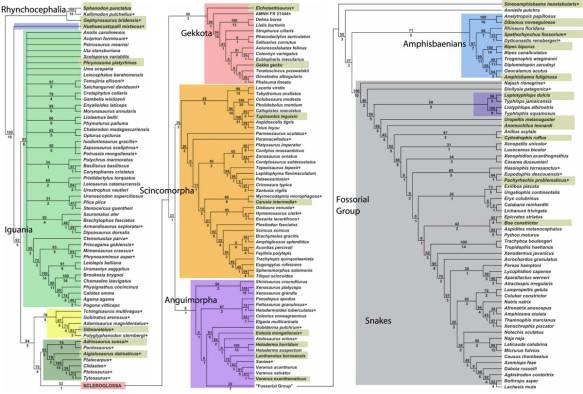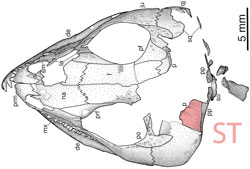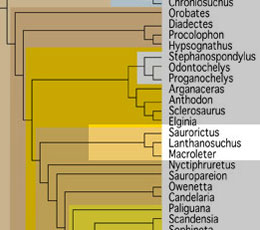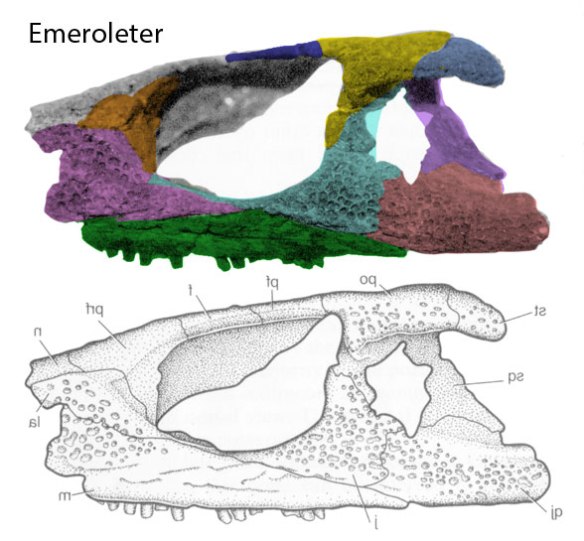
Figure 1. Emeroleter skull showing lateral temporal fenestra, as also shown in its sisters Macroleter, Romeriscus and Lanthanosuchus. Images from Tsuji, Müller and Reisz 2012.
This looks like a regular break (Fig. 1), but Emeroleter nests between taxa that also have a lateral temporal fenestra (Fig. 2). So this could be a real lateral temporal fenestra made ragged over the last tens of millions of years.
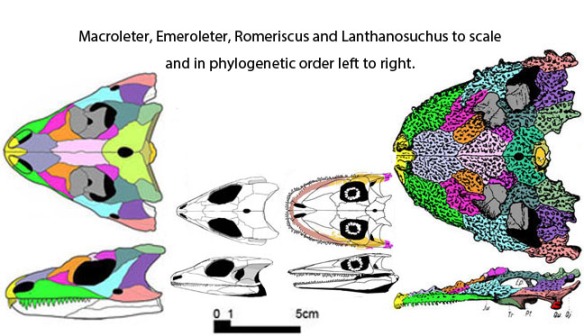
Figure 2. Macroleter, Emeroleter, Romeriscus and Lanthanosuchus in phylogenetic order and to scale. All have a lateral temporal fenestral, even if small. This is a better evolutionary sequence leading to Lanthanosuchus than Acleistorhinus can provide.
At this stage in lepidosaurormorph evolution, taxa were just beginning to experiment with the lateral temporal fenestra, which was “here to stay” in owenettids, like Sauropareion.
However, the last time we see the lower temporal bar (jugal/ quadratojugal connection) is right here (Fig. 2) until these two bones are reconnected again in basal sphenodontians, drepanosaurs and fenestrasaurs.
DeBraga and Reisz (1996) and Cisneros (2004) reported that Acleistorhinus was the sister to Lanthanosuchus. However, the large reptile tree indicates a better match with Romeriscus, Emeroleter and Macroleter. Acleistorhinus makes a better sister to the turtle-like millerettid, Eunotosaurus.
Tsuji et al. 2012 reported, “A clade consisting of the nycteroleters and pareiasaurs, here termed Pareiasauromorpha, is supported by both methods.” Unfortunately, it is not supported by the large reptile tree, unless all subsequent taxa that have these taxa at their base are also called pareiasauromorphs, and that would include all turtles, lizards and snakes, and Lanthanosuchus, which Tsuji et al. 2102 also nested with Acleistorhinus far from Emeroleter.
References
Cisneros et al 2004. A procolophonid reptile with temporal fenestration from the Middle Triassic of Brazil. Proceedings of the Royal Society London B (2004) 271, 1541–1546
deBraga M and Reisz RR 1996. The Early Permian reptile Acleistorhinus pteroticus and its phylogenetic position. Journal of Vertebrate Paleontology 16(3): 384–395. doi:10.1080/02724634.1996.10011328.
Modesto SP, Damiana RJ and Sues H-D 2002. A reappraisal of Coletta seca, a basal procolophonid reptile from the lower Triassic of South Africa. Palaentology 45(5):883-895.
Tsuji, Müller and Reisz 2012. Anatomy of Emeroleter levis and the Phylogeny of the Nycteroleter Parareptiles. Journal of Vertebrate Paleontology 32 (1): 45-67. doi:10.1080/02724634.2012.626004.


